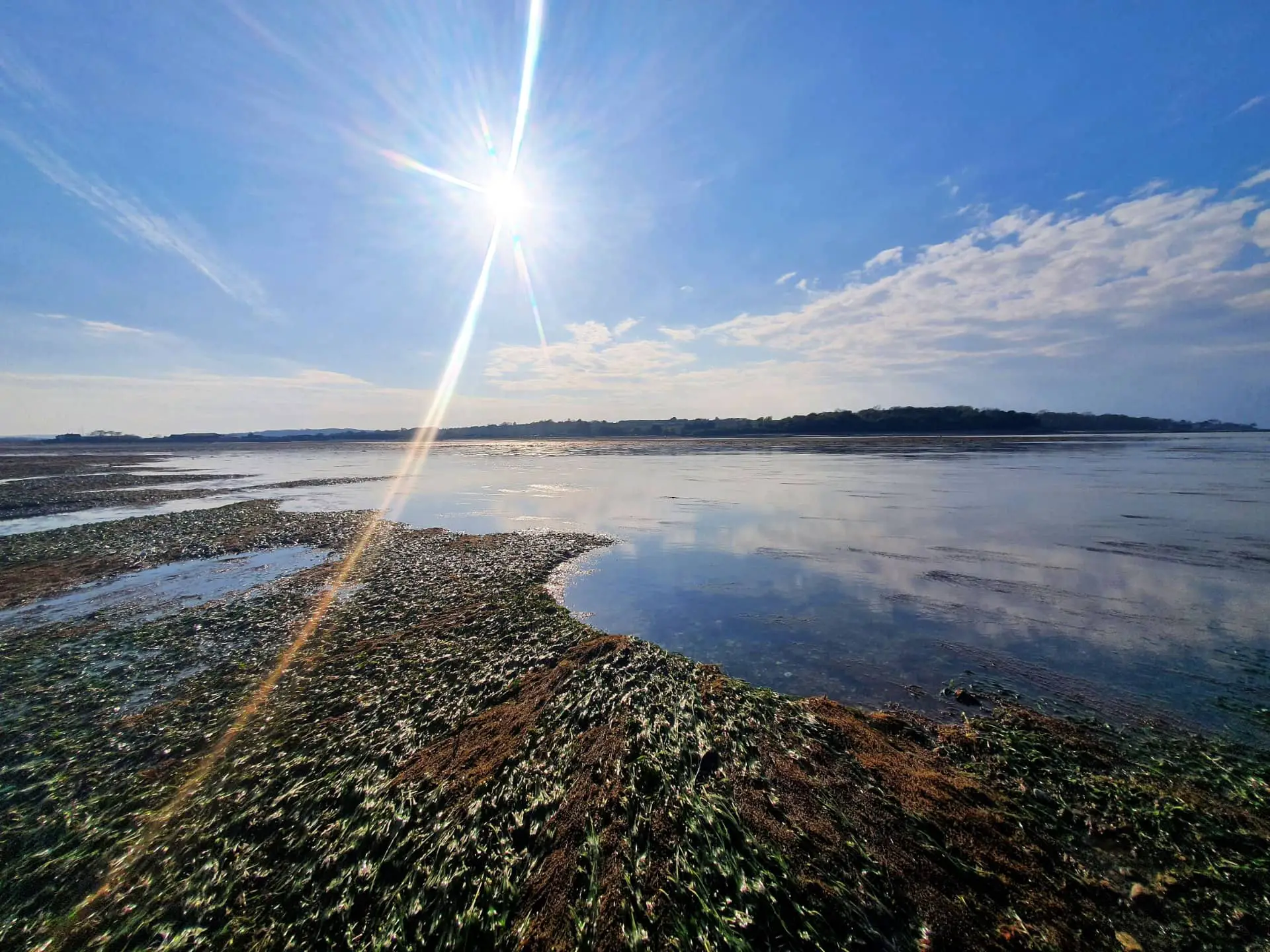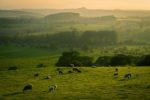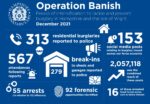Seagrass, the extraordinary marine super-plant, is set to receive a boost on the Isle of Wight thanks to Seagrass Ocean Rescue, a wide-reaching three-year restoration programme led by World Wildlife Fund (WWF), Swansea University and the conservation charity Project Seagrass, with help from Island-based environmentalists at ARC.
The initiative to seed and support new and existing underwater seagrass meadows in the Isle of Wight’s coastal waters is a collaborative effort and will be shaped with help and advice from the Island’s community groups and stakeholders in 2022.
The Seagrass meadows
If you’ve ever explored west of Ryde Pier or Bembridge Ledges at low tide, you’ll have seen expanses of the Island’s seagrass meadows first-hand. Not a seaweed but a plant, seagrass is one of only a handful of underwater plants in the world, making the most of the light in shallow coastal waters to photosynthesise; a marine ‘pollinator’ that flowers and produces seeds.
These meadows form a complex habitat for marine wildlife, providing a huge range of ‘services’… from refuge for juvenile fish to the provision of feeding beds for overwintering birds such as our Brent Geese. Crucially, seagrass captures and stores carbon, making it an amazing ally in the battle to combat climate change.

Cullen-Unsworth: Have real potential to contribute to the UK’s carbon emission targets
Leanne Cullen-Unsworth at Project Seagrass, explains,
“Seagrass meadows are critical habitats providing benefits that support the survival of every living thing on Earth.
“Seagrasses produce oxygen, clean our coastal water, absorb greenhouse gas emissions, and help to keep our ocean healthy which stabilises the climate —both global and local. Seagrass meadows have the capacity to capture and store large volumes of carbon. They therefore have real potential to contribute to the UK’s carbon emission targets if restored at sufficient scale. Seagrasses also help adaptation to climate change by reducing storm wave energy and so helping to protect our coastlines.
“They support and provide habitat for thousands of species of fish (including commercially important cod, pollock too), invertebrates, birds, reptiles and mammals and contribute to the livelihoods of millions of people. While up to 90 per cent of our seagrass has disappeared in the UK, we’ve been surprised and excited to see that the Isle of Wight is still a stronghold.”
Extensive seagrass meadow health surveys performed around the Solent
Evie Furness who joins the project from Swansea University, explains that the team began exploring the Isle of Wight last summer, carrying out initial habitat surveys, including drone mapping, remote camera work and dive surveys and more to gain a clear understanding of the local environment.
She explains,
“Alongside these surveys, we’ve worked with Natural England, Ocean Conservation Trust and the Hampshire and Isle of Wight Wildlife Trust to perform extensive seagrass meadow health surveys around the Solent, including looking at current reproductive effort.
“Last winter, we planted small scale trials at three sites (Yarmouth, Seaview and on the mainland at Beaulieu) which will help us to test the success and suitability of our planting methods.”
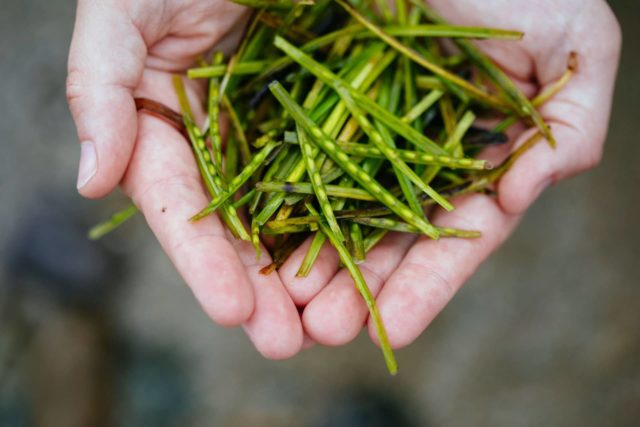
Zanre: Co-design and manage the project with local groups
Ricardo Zanre at WWFUK said,
“The climate and nature crises are two sides of the same coin – protecting and restoring carbon rich habitats like seagrass meadows is essential to address the climate crisis. We’re right at the very start of things, scoping the potential for seagrass restoration in the Solent by assessing ecological suitability, as well as stakeholder and community interest.
“We aim to co-design and manage the project with local groups, and with their help, we’ll make decisions on where best to focus seagrass restoration and activities.
“Current donors to the project, include Sky Zero and Carlsberg, along with other philanthropic donations. The Seagrass Ocean Rescue project is also working closely with other seagrass projects in the Solent including collaborative research with the REMEDIES project and HIWWT. Seagrass Ocean Rescue is now looking to develop local partnerships (such as with ARC) to scope and plan for potential restoration in the Solent area.”
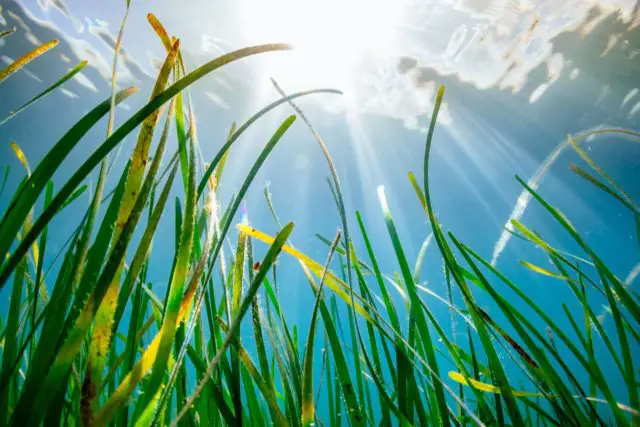
Boyd: Taking place at such a crucial time for the Island
Ian Boyd, Director at Sandown-based Arc said,
“This fantastic project is taking place at such a crucial time in the creation of new partnerships for wildlife here on the Isle of Wight.
“The Island’s UNESCO World Biosphere Reserve is fundamental to these efforts and over 60 per cent of the designation is in fact marine, taking in all of the Solent and reaching the Hampshire and Dorset coastlines.
“WWFUK’s great work to conserve and extend local seagrass meadows will contribute essential learning to the challenge of climate change adaptation as well as forging new and productive links between the Island’s coastal communities and its outstanding marine environment.”
News shared by Claire on behalf of Arc Biodiversity and Climate. Ed
Image: Seagrass at Bembridge, Isle of Wight by Evie Furness for Project Seagrass

